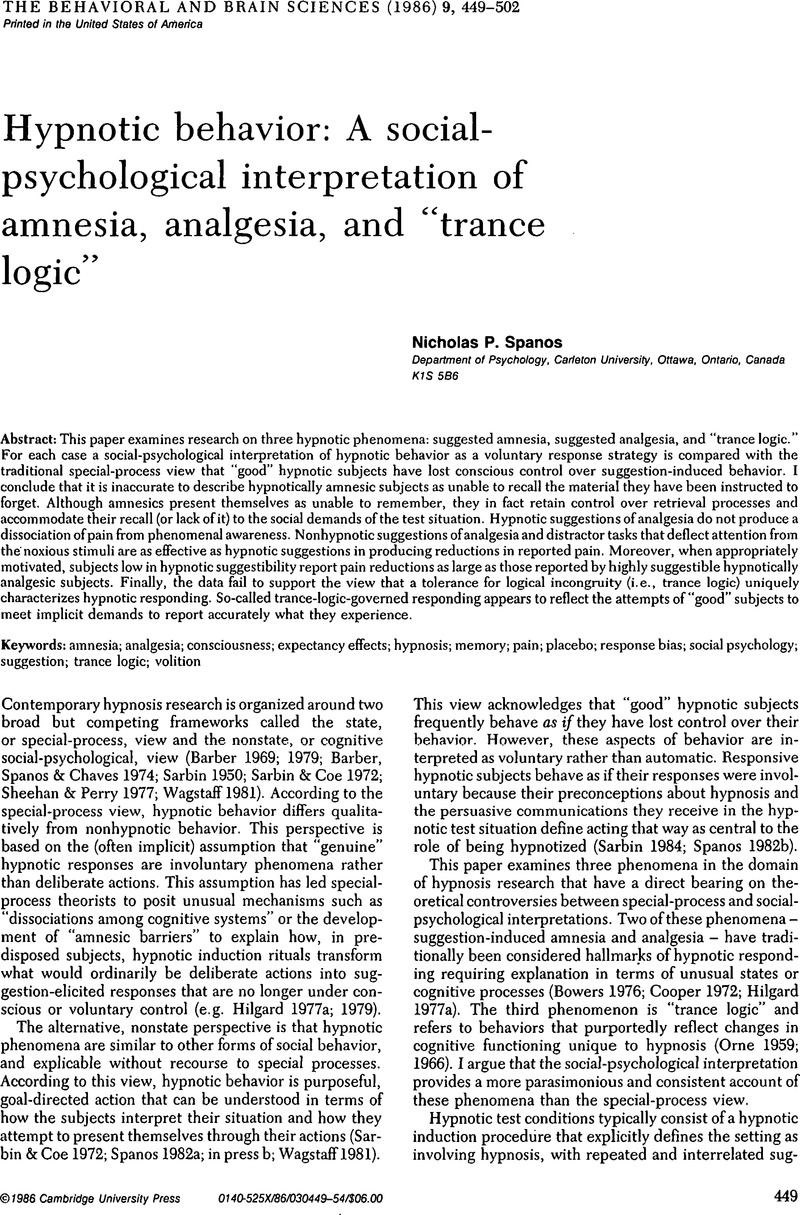Crossref Citations
This article has been cited by the following publications. This list is generated based on data provided by Crossref.
Spanos, Nicholas P.
Cross, Wendi P.
Menary, Evelyn P.
Brett, Pamela J.
and
de Groh, Margaret
1987.
Attitudinal and Imaginal Ability Predictors of Social Cognitive Skill-Training Enhancements in Hypnotic Susceptibility.
Personality and Social Psychology Bulletin,
Vol. 13,
Issue. 3,
p.
379.
Wagstaff, Graham F.
1988.
Critical evaluation of the ethogenic approach to hypnotic pain reduction: A response to Kroger.
New Ideas in Psychology,
Vol. 6,
Issue. 1,
p.
75.



